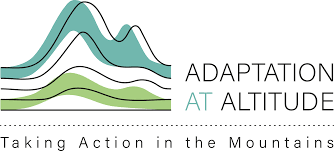In situ climatological and other data from the world's mountains are crucial for many applications. It follows that any limitations associated with the coverage of such data (e.g. limited spatial density of stations, short record lengths, lack of observations at higher elevations, etc.) can impinge upon several important activities, not least tracking ongoing change in mountain climates and reliably projecting future changes and their impacts.
Despite this situation, the fundamental coverage of in situ data coverage with respect to space, time, and elevation has not yet been comprehensively assessed globally. As such, comparing data coverage across different mountain regions, for instance, is impossible. Yet it is precisely this information that international organisations and other stakeholders require if they are able to make sound informed decisions around investing in new (and maintaining existing) in situ monitoring efforts.
In Phase 1 of this project, to begin to fill this gap, we analysed climatological records for three key variables – namely air temperature, precipitation, and snow depth – contained in perhaps the most comprehensive global inventory available – the Global Historical Climatology Network-Daily (GHCNd). We also sought to assess data coverage in more relative terms, for instance with respect to the perceived hydrological importance of mountain ranges, and the size if their downstream populations and economies. Lastly, we developed a script that enables the temporal coverage (proportion and periods of missing data vs. actual observations) to be efficiently summarised and assessed for any GHCNd station, thereby extending the utility of our work beyond mountains. An "Open Science" approach, based on exclusively open data and software, was employed throughout. An article summarising this work was published in Frontiers in Climate in April 2022, and can be accessed here.
Looking ahead, we hope that it will be possible to conduct a similar analysis using the GEO Mountains In Situ Inventory of Observational Infrastructure. This will enable the coverage of a broader and more interdisciplinary range of variables to be assessed, accounting for a more diverse set of observational sites (especially including many more “research-oriented” site). To be possible, however, the inventory must be as comprehensive and correct as possible. To that end, we invite contributions from the community to either improve information pertaining to sites that are already represented and/or add sites that are currently missing.
Submit to GEO Mountains In Situ Inventory of Observational Infrastructure.
Contact: Dr. James Thornton, MRI / GEO Mountains (james.thornton@unibe.ch).








